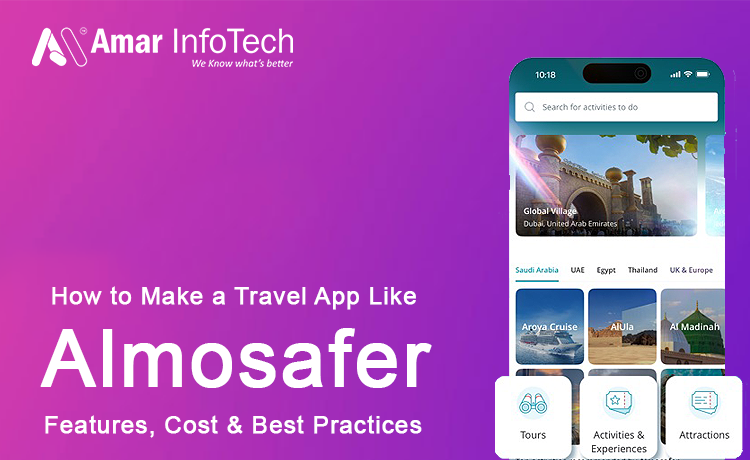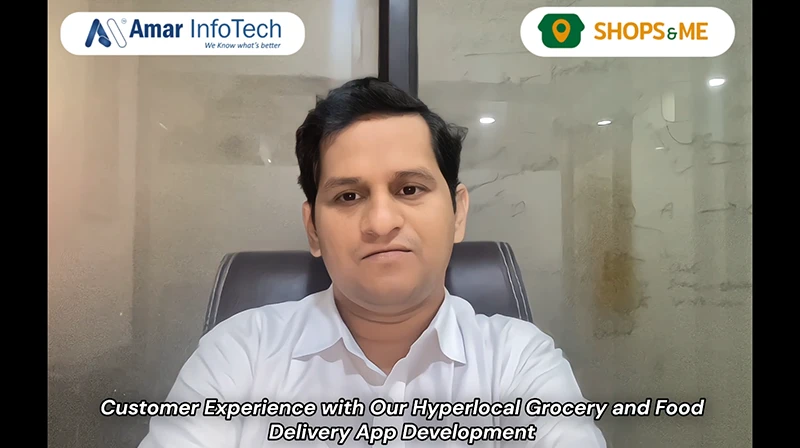In the fast-evolving landscape of web development, creating seamless and responsive user experiences has become a top priority. Single Page Applications (SPAs) have emerged as a powerful solution to address this demand, providing users with a fluid and interactive browsing experience. In this blog post, we'll delve into the world of SPAs, exploring their benefits, the reasons behind their JavaScript-centric nature, and the top 10 front-end frameworks to consider in 2024 for web development.
Streamlining User Experience: Benefits of Single Page Applications
In the ever-evolving world of the internet, the way we interact with websites and apps is constantly changing. One significant improvement in this experience comes from something called Single Page Applications (SPAs). Let's break down how SPAs are like your digital superhero, working behind the scenes to make your online adventures smoother and more enjoyable.
What's a Single Page Application, Anyway?
Imagine a traditional website where, every time you click on a link or a button, the entire page reloads. It's like closing a book and opening it again to turn the page. SPAs, on the other hand, are like reading a magical book where the pages change instantly as you flip – no waiting, no reloading.
Benefits in Plain Language
- Speedy Performance
- Seamless Navigation
- App-Like Feel
- Less Interruption
- Saves Data
SPAs load once, and then they're ready to roll. No need to wait for a whole new page to load every time you want to check something. This means faster access to information and a more responsive experience. It's like having a super-fast superhero at your service.
Have you ever clicked on a link, and there's this moment of suspense as the new page slowly appears? SPAs eliminate that suspense. Click, and the new content smoothly slides into view. It's like teleporting through your favourite websites without the need for loading screens.
SPAs bring a touch of magic by making your web experience feel more like using an app. Remember how smoothly your favourite apps work? SPAs replicate that feeling, providing a more engaging and interactive experience, just like your favourite games or social media apps.
Think about a busy city with lots of traffic lights. Each time you hit a red light, you need to stop and wait. Traditional websites are a bit like that – stopping and starting. SPAs are like a city with fewer interruptions – you can keep moving through the digital landscape without unnecessary stops.
Imagine you're on a limited data plan, and every web page you load eats into your data. SPAs are like data-saving superheroes. Since they only load once, you're not using up your precious data every time you click around. It's like having a sidekick that helps you save data for more important things.
Why Is Most Single Page Application Built With JavaScript?
JavaScript is like the superhero behind Single Page Applications (SPAs), and it's not by accident! It's super flexible and can handle all kinds of changing and moving stuff on the web. That's why it's the favourite language for making things happen right on your computer or phone.
Thanks to some awesome tools called JavaScript frameworks, developers can easily create SPAs that work really well. These frameworks make it a breeze to build SPAs that feel smooth and respond quickly to whatever you do. So, in a nutshell, JavaScript is the secret sauce that makes SPAs awesome and fun to use!
Exploring the Best: 10 SPA Frameworks Worth Checking Out in 2024
Now, let's explore the top 10 front-end frameworks that are shaping the landscape of Single Page Application development in 2024.
- React.js
- Vue.js
- Angular (Angular.js or Angular 2+)
- Ember.js
- Backbone.js
- Aurelia
- Meteor.js
- Knockout.js
- Polymer
- Svelte
React.js, maintained by Facebook, has gained immense popularity for its component-based architecture and virtual DOM. React enables efficient updates by minimising DOM manipulation, resulting in improved performance. The vibrant ecosystem of libraries and tools, such as Redux for state management, enhances React's capabilities. Developers appreciate its declarative approach to building UIs, making it easier to reason about application logic. React's flexibility and scalability make it an ideal choice for projects of varying sizes.
Vue.js is known for its simplicity and ease of integration. With a flexible core library, Vue.js allows developers to incrementally adopt its features, making it suitable for both small and large SPAs. Vue's reactive data binding system ensures efficient updates, and its component-based structure promotes reusability. The framework's gentle learning curve and clear documentation contribute to its growing popularity among developers seeking a balance between simplicity and functionality.
Angular, developed and maintained by Google, stands out as a comprehensive and feature-rich front-end framework. It utilises TypeScript, providing static typing for enhanced code quality. Angular follows a modular architecture, promoting code organisation and reusability. Two-way data binding simplifies the synchronisation between the model and the view, facilitating the development of complex SPAs. While Angular has a steeper learning curve, its robust tooling and a large community contribute to its widespread adoption.
We've recently secured five major travel projects, and our team is actively engaged in their development. We're utilising Angular for the front-end and the Laravel PHP framework for the backend. For additional information and a comprehensive list of features, feel free to explore TravellGDS.
Ember.js takes an opinionated approach with a focus on convention over configuration. This results in a structured development process that aids rapid application development. Ember comes with a set of conventions and strong developer tooling, simplifying common tasks. While its opinionated structure may not suit all projects, Ember's batteries-included philosophy provides a cohesive environment for building scalable and maintainable SPAs.
Backbone.js is a lightweight and minimalist framework that provides the essential structure needed for web applications. It allows developers to choose their preferred tools for tasks like templating and data storage, providing flexibility. Backbone's simplicity makes it easy to integrate with other libraries and frameworks, making it a suitable choice for projects where a minimalistic approach is preferred.
Aurelia is a forward-thinking framework that prioritises simplicity and extensibility. Its modular design allows developers to choose specific parts of the framework, making it adaptable to project requirements. Aurelia's clean syntax and convention-based configuration enhance the development experience. Although it has a smaller community compared to some other frameworks, Aurelia's focus on simplicity and flexibility makes it an attractive option for SPA development.
Meteor.js is a full-stack JavaScript framework that simplifies the development of real-time web applications. Meteor.js includes everything needed to build an isomorphic codebase, enabling the sharing of code between the client and server. With features like hot code reloading and real-time updates, Meteor.js is well-suited for projects requiring rapid development and a seamless user experience. However, its opinionated stack may not be suitable for all projects.
Knockout.js focuses on declarative bindings and automatic UI updates. It provides a simple and elegant way to build SPAs with a clear separation of concerns. Knockout's lightweight nature makes it easy to integrate with existing projects, and its simplicity is particularly advantageous for projects with complex data models. However, its smaller community and less active maintenance may be a consideration for some developers.
Polymer, developed by Google, is a library for building web components. With an emphasis on reusability and interoperability, Polymer provides a modern approach to constructing SPAs using web standards. Polymer's focus on web components makes it suitable for projects requiring component-based architecture and reusability. However, its smaller community and the evolving nature of web standards may impact its adoption in comparison to other frameworks.
Svelte takes a unique approach by shifting the work from the browser to the build step. It compiles components into highly optimised JavaScript at build time, resulting in smaller bundle sizes and improved runtime performance. Svelte simplicity and performance gains make it an attractive option for developers seeking an efficient and modern framework. However, being relatively new, it has a smaller ecosystem compared to more established frameworks.
Single Page Application Frameworks Comparison: Their Pros & Cons
Choosing the right framework for your single page application requires careful consideration. Let's compare these frameworks based on their strengths and weaknesses.
| Sr.No. | Framework Name | Pros | Cons |
|---|---|---|---|
| 1 |  React.js React.js | Virtual DOM for efficient updates, thriving ecosystem. | Boilerplate code, the need for additional libraries for state management. |
| 2 |  Vue.js Vue.js | Easy to integrate, gentle learning curve. | Smaller ecosystem compared to React and Angular. |
| 3 |  Angular Angular | Comprehensive feature set, strong community support. | Steeper learning curve, larger bundle size. |
| 4 |  Ember.js Ember.js | Convention over configuration, strong developer tooling. | Opinionated structure may not suit all projects. |
| 5 |  Backbone.js Backbone.js | Lightweight, easy integration with other libraries. | Minimal built-in features, less opinionated. |
| 6 |  Aurelia Aurelia | Clean syntax, modular design. | Smaller community compared to other frameworks. |
| 7 |  Meteor.js Meteor.js | Full-stack framework, real-time updates. | Opinionated stack, may not suit all projects. |
| 8 |  Knockout.js Knockout.js | Declarative bindings, simplicity. | Smaller community, less actively maintained. |
| 9 |  Polymer Polymer | Web component focus, reusability. | Smaller community, evolving standards. |
| 10 |  Svelte Svelte | Smaller bundle sizes, improved runtime performance. | Relatively new, smaller ecosystem. |
Key Considerations for Selecting Single Page Application Frameworks: What to Ask
As you start building your awesome website, think about these questions to help you pick the right tools:
- Project Requirements
- Community Support
- Learning Curve
- Scalability
- Integration
What are the specific needs of your project, and which framework aligns best with those requirements?
How active and supportive is the community around the framework?
How quickly can your team get up to speed with the framework?
Will the chosen framework scale effectively as your application grows in complexity?
How easily can the framework integrate with other tools and libraries?
Conclusion
In the changing world of making cool websites, picking the right tools is super important. The kind of tools you choose, like Angular for lots of features, React for flexibility, or Vue for simplicity, can really make or break your project. Think about what your project needs, look at the good and not-so-good parts of each tool, and then decide what's best for you. Don't forget to reach out to us for assistance. Have fun coding in 2024!






























